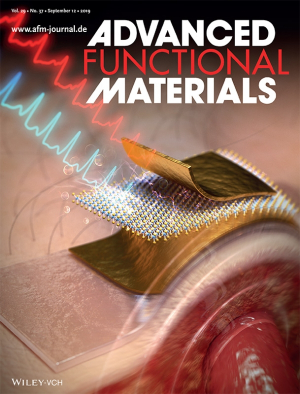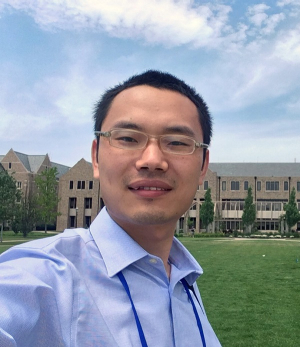New flexible biocompatible sensor targets cardiovascular diseases
Wearable electronics – from smartwatches to fitness trackers – are experiencing rapid growth in recent years. New technological advances are prioritizing even more health-related functionality, such as using wearable devices for non-invasive tracking of vital signs with the aim of preventing common health problems. Designed to be worn close to the human body, at times even attached to the skin, these devices need to be flexible.
Jie Chen, a doctoral candidate in materials science and engineering at the UH Cullen College of Engineering and the Ryou Group recently developed a flexible biocompatible pulse sensor, which could help diagnose cardiovascular diseases.
According to the World Health Organization, cardiovascular diseases are the leading cause of death for men and women around the globe. An estimated 17.9 million people died from cardiovascular diseases in 2016. Of these, 85 percent were attributable to heart attacks and strokes.
The good news is that most cardiovascular diseases can be prevented or managed by addressing risk factors like tobacco use, bad diets, alcohol intake and physical inactivity.
“I found myself wondering if there is a simple way to help detect cardiovascular health on a daily basis so that patients can pay attention and receive timely therapy,” Chen said. “This research could vastly improve the quality of life and the health of human beings.”
Chen recently discussed the team’s research findings in an article titled “High durable, biocompatible, and flexible piezoelectric pulse sensor using single-crystalline III-N thin film.” It was published in the prestigious journal Advanced Functional Materials as a featured back cover article.
The team is focusing on flexible pulse sensors that can detect subtle skin surface deformation caused by arterial pulses – specifically piezoelectric pulse sensors. The piezoelectric sensors offer to be a promising option with their relatively high sensitivity and stability as well as low power consumption, when compared with conventional active pulse sensors.
However, the reported high‐performance PPSs contain toxic lead, which is of concern and limits their practical applications.
“Group III-nitride thin film-based piezoelectric generator developed in our research overcomes most of these drawbacks and could make the self-powered electronics one step closer to reality,” Chen said.
In this study, a highly sensitive and flexible PPS that detects surface deflections on the micrometer scale is fabricated with single‐crystalline group III‐nitride thin film. This biocompatible flexible PPS is sensitive enough to detect pulse waveform with detailed characteristic peaks from most arterial pulse sites when attached to the skin surface without applying external pressure. Useful physiological parameters such as the pulse rate, artery augmentation index and pulse wave velocity can be drawn from the as‐acquired pulse waveforms. It can also be used to continuously monitor the arterial pulse waveform.
Chen is the lead author on the article. Jae-Hyun Ryou, associate professor of mechanical engineering, team leader of the Ryou Group and Chen’s faculty advisor, is the corresponding author. Other UH co-authors include Noor Nabulsi, a UH mechanical engineering senior and an undergraduate research assistant; and Weijie Wang, a UH doctoral candidate in mechanical engineering.
Non-UH co-authors on the paper are: Haoran Liu with the Houston Methodist Research Institute; Wenbo Zhao with the Capital Medical University in Beijing, China; Ja Yeon Kim with the Korea Photonics Technology Institute; and Min-Ki Kwon with the Chosun University in South Korea.
To read the article, please visit: https://onlinelibrary.wiley.com/doi/abs/10.1002/adfm.201903162

